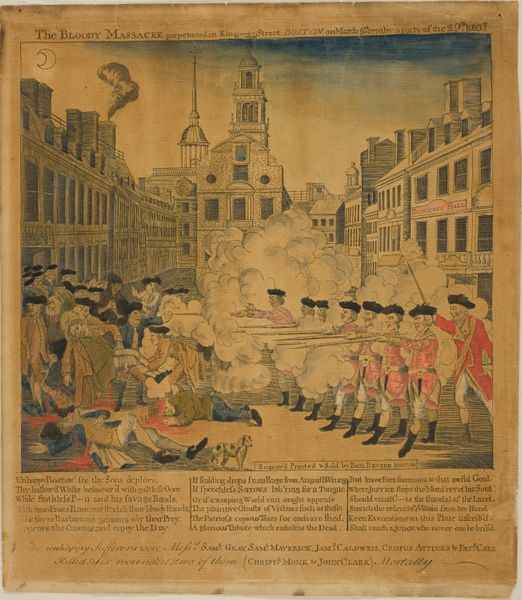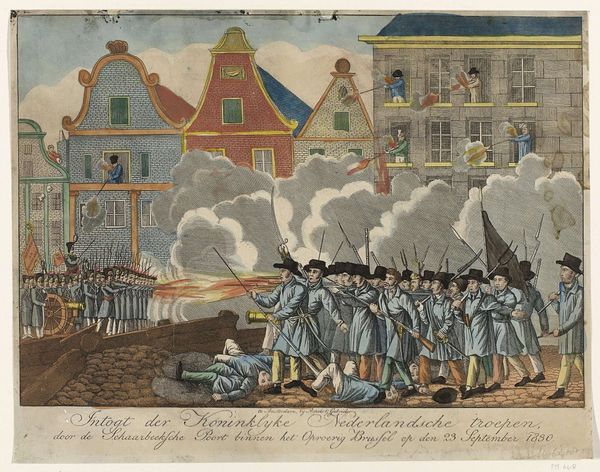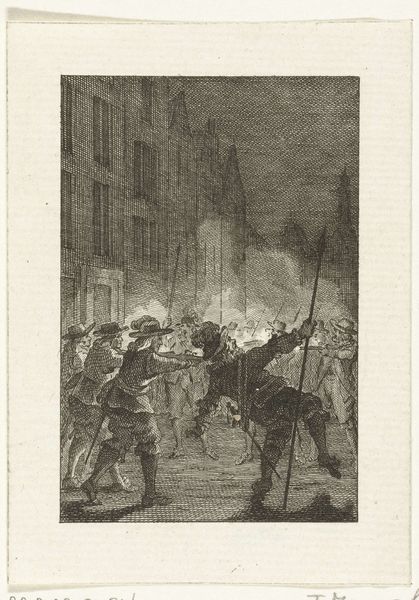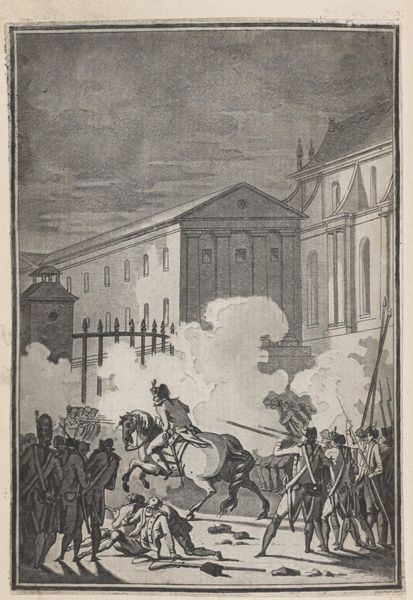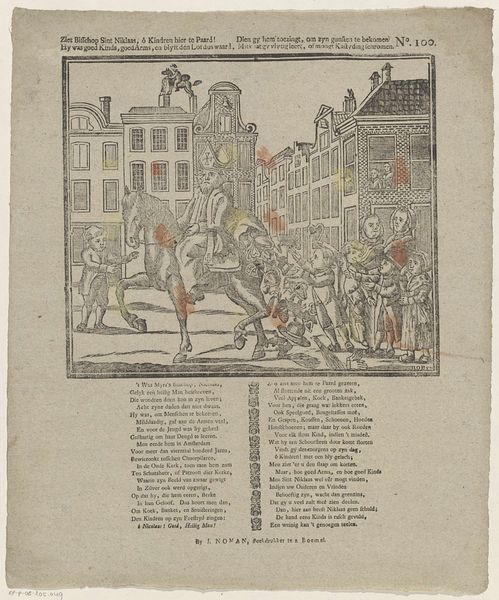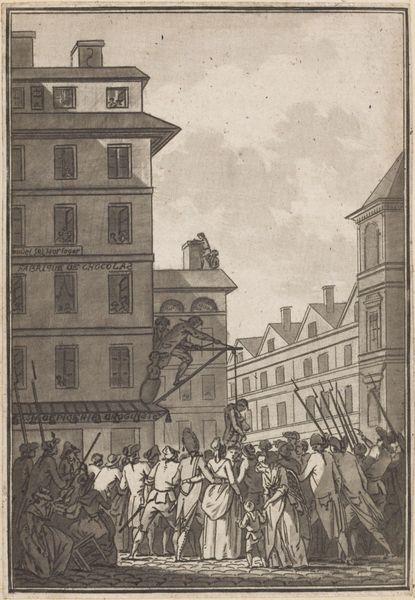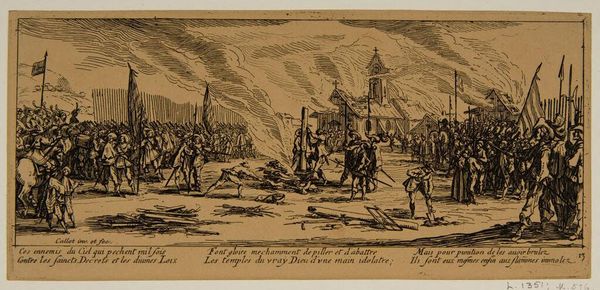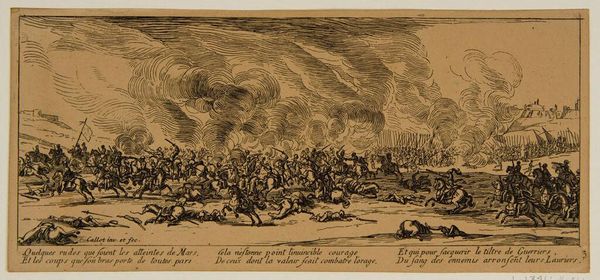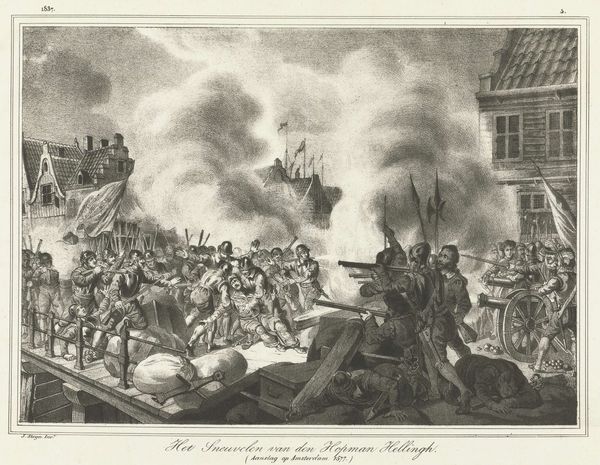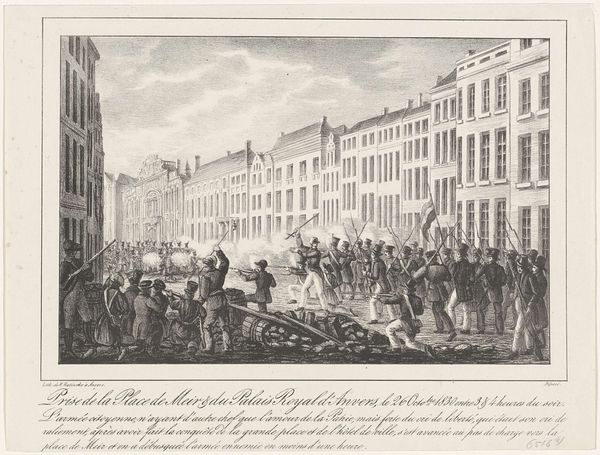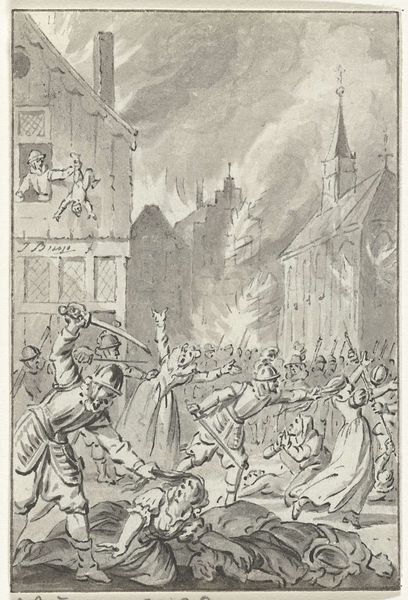
The Boston Massacre 1770
Dimensions: Sheet: 27.3 x 22.5 cm (10 3/4 x 8 7/8 in.)
Copyright: CC0 1.0
Curator: Here we have Jonathan Mulliken's print depicting "The Bloody Massacre perpetrated in King Street, Boston," dating from around 1770. Editor: It's visceral, isn't it? The blue-grey smoke against the tan paper creates an unsettling atmosphere. A very material depiction of violence and its immediate aftermath. Curator: Indeed. Mulliken emphasizes linear perspective, drawing the viewer's eye into the composition. Note the classical architectural backdrop, lending a sense of historical weight. The repetition of forms and figures offers a sense of rhythmic horror. Editor: Yes, but look at the materiality of the print itself. The rough texture of the paper, the way the ink bleeds—these are not accidents. It speaks to the reality of production and dissemination of revolutionary propaganda. We can sense the urgency of its creation. Curator: Undoubtedly, the print served as a potent symbol. The formal elements like the arrangement of bodies—some fallen, others recoiling—guide the viewer's emotional response. The artist deliberately crafts our reading of the event. Editor: And think about the resources required: the copper plate, the press, the labor. This wasn’t just art; it was a manufacturing of dissent intended for broad consumption, impacting labor and material supply chains. Curator: Certainly. Mulliken's composition masterfully transforms a local incident into a grand narrative of oppression. Editor: It's powerful when we acknowledge its creation, the act of its dissemination, and its impact on social and political discourse.
Comments
No comments
Be the first to comment and join the conversation on the ultimate creative platform.
